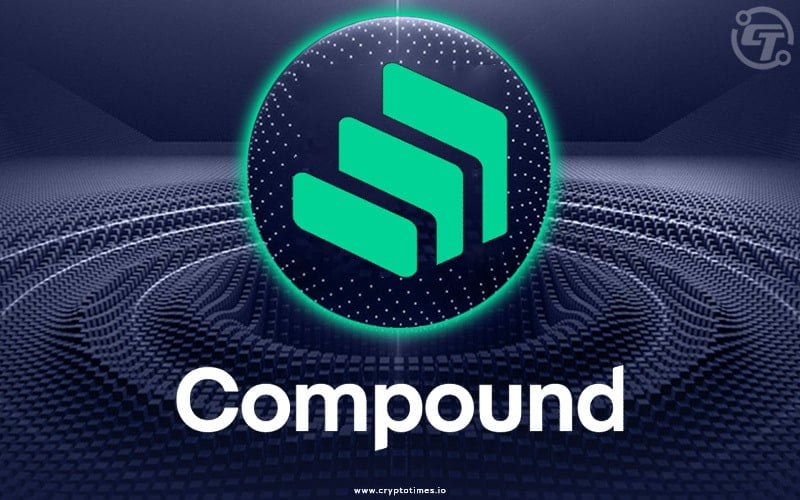Compound is a blockchain-based borrowing and lending dapp. You can lend your crypto out and earn interest on it by increasing the liquidity. And if you need some money to pay but your funds are in crypto then you can deposit your crypto to the compound smart contract as collateral, and borrow against it. The compound contract automatically matches borrowers and lenders, and adjust interest rates dynamically based on supply and demand. When assets are supplied to the compound protocol, balances are represented by cTokens, which can be used as collateral to earn interest.
Compound allows users to take out over-collateralized loans, borrowing up to 75% of their initial collateral. Collateral can be added or removed freely, but undercollateralized debts can easily become liquidated. The protocol supports several assets and has been audited and formally verified.
However, if you are a crypto enthusiast who loves to sailing through the opportunities that this unique space offers, you can transform your crypto trading experience with cutting-edge AI-powered research and order placement tools at Immediate Edge Australia.
It has recently become the largest lending protocol in Decentralized Finance. The compound was initially centralized, the recent release of its governance token, COMP, marks the first step in turning Compound into a community-driven decentralized autonomous organization (DAO). The Compound protocol lets users lend and borrow 9 Ethereum-based assets.
How Does Compound Protocol Work?
The Compound protocol operates similarly to a bank. You can deposit various cryptocurrencies and earn an annual interest on your deposits, similar to depositing your money into the bank. However, Compound’s main difference is that it does not have custody of your cryptocurrency deposits. Instead, you are actually sending your crypto to and interact with a smart contract, rather than another company or user. This feature is important because it means that no person or authority can control or take your funds. What makes all of this so interesting is that It can not be shut down since there is no central authority.
As mentioned, in the Compound protocol users can deposit cryptocurrency as lenders and/or withdraw cryptocurrency as borrowers. Instead of lending directly to borrowers, lenders combine their assets into asset pools from which users can borrow.
Users can only borrow a USD value in crypto that is below the collateral they have supplied (e.g. 60% of the collateral). The amount they can borrow depends on the liquidity and market cap of the collateral.
When you lend cryptocurrency on Compound, you received an amount of corresponding cTokens. cTokens exist to allow users to earn interest. The interest rate is determined by supply and demand and constantly updated by a complex algorithm.
As a rule of thumb, the greater the demand there is for an asset, the higher the interest rates will be for both lenders and borrowers. This gives incentive to lenders to lend and deters borrowers from over-borrowing. Lenders can also withdraw their assets at any time.
If a user has borrowed more than what they were permitted due to a drop in the price of the asset they provided as collateral, they risk the liquidation of that collateral. Borrowers can pay back a portion of their debt to increase their borrowing capacity above the threshold of liquidation and carry on as usual.
What Does the COMP Token do?
The COMP token gives users governance over the protocol. 1 COMP token is required to cast a vote, and votes can be delegated to other users of the protocol without needing to actually transfer the token to them.
All proposals made in Compound consist of executable code. A user must have 1% of the total COMP supply on hand or delegated from other users to table a proposal. Once submitted, there is a 3-day voting period wherein a minimum of 400 000 votes must be cast. If more than 400 000 votes affirm the proposal, the new change implemented after a 2-day waiting period.
Risks of Using Compound Protocol: Compound Liquidity Mining
For Compound, there are risks associated with trying to earn $COMP through borrowing on the platform. Compound has a liquidation clause that kicks in when borrowing on the platform.
For instance, if the cryptocurrency you are borrowing increases in value and exceeds the value of your collateral, your borrowing account will become insolvent. In such a case, other users can step in and repay a portion of your outstanding loan in exchange for a portion of your collateral at a liquidation incentive.
This liquidation incentive is the discount at which other users can receive your collateral. So if the liquidation incentive at the time is 8% (subject to change through voting on Compound’s governance system), then other users can receive your collateral at 8% off the market price when they help repay your loan. Hence there are serious incentives for users on Compound to liquidate others and this will result in the person being liquidated potentially suffer huge losses.
Compound Protocol vs. MakerDAO
Up until other than Compound MakerDAO was the most popular DeFi project on Ethereum. For those unfamiliar, MakerDAO also allows users to borrow cryptocurrency using Ethereum, BAT or wBTC as collateral.
However, the cryptocurrency you can borrow is not “just another” Ethereum-based asset, but an ERC-20 stablecoin called DAI which is ‘soft-pegged’ to the US dollar. Unlike USDT or USDC which are backed by centralized assets held in custody, DAI is fully decentralized and backed by crypto.
As in Compound, MakerDAO does not let you borrow the full amount of the Ethereum collateral you deposited in DAI. Instead, you can only borrow 66.6% of the USD value of the Ethereum you have put down as collateral. In contrast to Compound, this reserve factor is not subject to change.
Both MakerDAO and Compound have been used to yield farm. Funny enough, Compound users were borrowing DAI on MakerDAO to lend it in Compound when it had the highest interest rate. MakerDAO also gives users the option to lock up their DAI in return for interest.
While there are many differences between the two DeFi giants, the two most notable are
- that the goal of MakerDAO is fundamentally to support the DAI stablecoin and,
- that Compound gives users additional incentive beyond interest rates (COMP) to participate in the protocol.
How it is that Compound overtook MakerDAO so quickly is quite easy to understand when you put the two protocols side by side. In addition to greater incentives for participation, Compound also supports substantially more assets for lending and borrowing. This gives it the advantage when it comes to yield farming, which is arguably the driving factor behind these kinds of DeFi protocols.
Furthermore, Compound is much easier to understand and use than MakerDAO.







